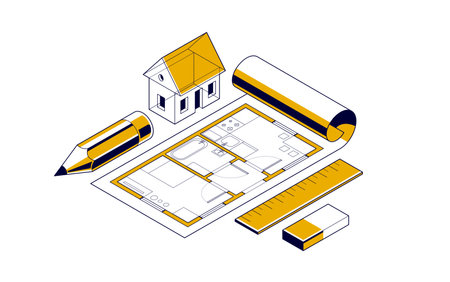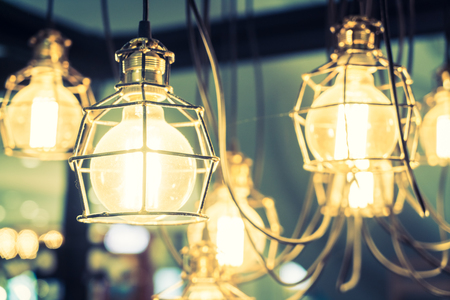1. Understanding the Importance of Kitchen Lighting
When it comes to designing the perfect kitchen in American homes, lighting plays a much bigger role than most people realize. Proper kitchen lighting isn’t just about making things look pretty—it’s key to how your space works, feels, and even keeps you safe. Let’s break down why good lighting is such a game changer for kitchens across the U.S.
Why Does Kitchen Lighting Matter?
The kitchen is often called the heart of the home in America. It’s where families gather, meals are prepared, homework gets done at the counter, and friends chat over coffee. With so much happening in one space, having the right lighting is crucial for:
- Functionality: The right light helps you see clearly when chopping veggies or reading recipes, making every task easier.
- Safety: Good lighting reduces the risk of accidents like knife slips or spills by illuminating work areas and walkways.
- Ambiance: Different lights can set the mood for anything from bright and lively family breakfasts to cozy evening dinners.
Types of Kitchen Activities and Lighting Needs
| Activity | Lighting Need | Recommended Fixture |
|---|---|---|
| Cooking & Food Prep | Bright, focused light | Under-cabinet lights or recessed ceiling lights |
| Dining & Entertaining | Softer, ambient light | Pendant lights or dimmable chandeliers |
| Cleaning Up | Crisp, clear light | Flush mount ceiling fixtures or track lighting |
| Homework/Work Tasks | Task lighting with minimal shadows | Adjustable desk lamps or pendant lighting over islands |
The American Kitchen: A Multi-Functional Space
Kitchens in American homes aren’t just for cooking—they’re multi-purpose hubs where life happens. Because of this, your lighting design needs to be flexible. Layering different types of lights (like overhead, task, and accent) makes it easy to adjust the atmosphere for any activity, whether you’re prepping a big holiday meal or enjoying a quiet cup of tea after dark.
The Link Between Lighting and Home Value
If you ever plan to sell your house, great kitchen lighting can also boost your home’s value. Homebuyers in the U.S. pay close attention to kitchens—bright, well-lit spaces feel modern, open, and inviting. Upgrading your lighting is an affordable way to make your kitchen stand out on the market.
2. Types of Kitchen Lighting Explained
Getting your kitchen lighting right is all about understanding the three main types of lighting: ambient, task, and accent. Each serves a unique purpose and, when combined, they create a warm, functional, and inviting kitchen space that fits the American lifestyle.
Ambient Lighting: The Foundation
Think of ambient lighting as the base layer—the soft glow that fills the whole room. In most American kitchens, this comes from ceiling fixtures like recessed lights, flush mounts, or even a big pendant lamp in the center of the room. Ambient lighting sets the overall mood and makes sure you’re not left in the dark when you walk in to grab a snack.
Common Sources of Ambient Lighting:
- Recessed ceiling lights
- Flush or semi-flush mount ceiling fixtures
- Large pendant lights
- Chandeliers (for open-concept kitchens)
Task Lighting: Focus Where You Need It
No one wants to chop veggies or read a recipe in a shadow! Task lighting gives you bright, focused light right where you need it—like countertops, sinks, and stovetops. Under-cabinet LED strips are super popular in American homes for this reason—they’re practical and make your kitchen look high-end.
Best Spots for Task Lighting:
- Under cabinets (to light up counters)
- Over the sink
- Above the stove or range hood
- Inside pantry closets
Accent Lighting: Add Some Style
This is where you get to show off your style! Accent lighting highlights your kitchen’s best features—maybe glass-front cabinets, open shelving, or a statement backsplash. It creates visual interest and adds depth to your space.
Popular Accent Lighting Ideas:
- LED strip lights inside cabinets or along shelves
- Pendant lights over kitchen islands
- Toe-kick lighting under lower cabinets
How These Lighting Types Work Together
The magic happens when you layer these three types of lighting. Here’s how they combine to create a balanced kitchen environment:
| Lighting Type | Main Purpose | Where to Use |
|---|---|---|
| Ambient | General illumination | Main ceiling area, central fixtures |
| Task | Focused work areas | Counters, sink, stove, pantry |
| Accent | Adds style & highlights features | Shelves, island, architectural details |
Pro Tip for American Kitchens:
If you want a flexible space for cooking, entertaining, and family time, use dimmer switches for your ambient and accent lights. This way, you can go from bright and energizing for meal prep to cozy and relaxed for dinner parties—all with a quick adjustment.

3. Popular Kitchen Lighting Fixtures in the U.S.
Lighting is a key element in American kitchen design, shaping both the mood and functionality of the space. Homeowners across the U.S. tend to favor certain lighting fixtures that not only brighten up their kitchens but also reflect personal style and current trends. Here’s a closer look at some of the most popular kitchen lighting options found in American homes today.
Pendant Lights
Pendant lights are a top choice for American kitchens, especially when it comes to illuminating kitchen islands or dining nooks. These hanging fixtures come in countless styles—from sleek industrial designs to classic glass globes—making them easy to match with any décor. Pendant lights create a focal point while providing targeted light where you need it most.
Key Benefits of Pendant Lights
| Feature | Benefit |
|---|---|
| Adjustable Height | Customize for task or ambient lighting |
| Variety of Styles | Fits modern, traditional, or farmhouse themes |
| Easy to Update | Swap out shades or bulbs for a new look |
Recessed Lighting
Recessed lights, also known as “can lights,” are installed flush with the ceiling, offering a clean and modern look. Popular in open-concept American homes, they provide even, unobtrusive illumination throughout the kitchen. Recessed lighting works especially well for general lighting and can be paired with dimmers for added flexibility.
Why Americans Love Recessed Lighting
- Sleek and minimalist appearance
- Covers large areas efficiently
- Ideal for low-ceiling spaces
- Easily combined with other fixtures for layered lighting
Under-Cabinet Lights
Under-cabinet lighting is a must-have for many American kitchens, as it brightens countertops and enhances safety during meal prep. This type of lighting is often LED-based, making it energy-efficient and long-lasting. It also helps eliminate shadows cast by overhead lights, ensuring every inch of your workspace is visible.
Main Advantages of Under-Cabinet Lights
| Type | Main Use | American Style Touches |
|---|---|---|
| LED Strips | Continuous counter illumination | Sleek and modern look; customizable colors available |
| Puck Lights | Spotlighting specific areas (like coffee stations) | Can be surface-mounted or recessed for subtlety |
| Tape Lights | Flexibility around corners and edges | Easily hidden for a seamless effect |
Chandeliers & Statement Fixtures
A chandelier isn’t just for the dining room—many American homeowners choose statement fixtures to add character over kitchen islands or breakfast tables. These larger pieces often become the centerpiece of the kitchen, blending function with personality. Styles range from rustic farmhouse wood-and-metal combinations to elegant crystal designs, catering to diverse tastes across the country.
A Few Popular Chandelier Styles in U.S. Kitchens:
- Farmhouse chandeliers: Feature distressed wood and black iron details.
- Modern geometric designs: Offer clean lines and bold shapes.
- Mason jar lights: Add a touch of Americana nostalgia.
- Candle-style fixtures: Bring timeless elegance to traditional kitchens.
The right combination of these favored fixtures not only lights up your kitchen but also brings your unique vision to life—just like so many American homes across the nation.
4. Tips for Layering Light for Maximum Impact
Why Layered Lighting Matters in American Kitchens
Layered lighting is the secret sauce behind a kitchen that feels both welcoming and functional. In American homes, kitchens are often the hub of activity—where we cook, gather, and sometimes even work. By combining different lighting sources, you can create a space that looks stunning and meets all your daily needs.
Types of Kitchen Lighting to Combine
| Lighting Type | Main Purpose | Popular Fixtures |
|---|---|---|
| Ambient Lighting | Main source of light; fills the room evenly | Recessed lights, flush-mount ceiling fixtures, large pendants |
| Task Lighting | Brightens specific work areas like countertops and sinks | Under-cabinet LEDs, pendant lights over islands, track lighting |
| Accent Lighting | Adds drama and highlights architectural features or décor | Cabinet strip lights, toe-kick lighting, spotlights |
| Decorative Lighting | Makes a style statement; adds personality to your kitchen | Chandeliers, designer pendants, vintage bulbs |
How to Layer Your Kitchen Lighting Like a Pro
Start with Ambient Lighting
This should be your base layer. Use ceiling-mounted fixtures or recessed lights spaced evenly across the kitchen. Aim for soft white bulbs (around 2700K-3000K) for a cozy vibe that’s classic in American homes.
Add Task Lighting Where You Need It Most
Install bright under-cabinet lights to banish shadows on countertops. Consider pendant lights above islands for both style and functionality. Don’t forget focused lighting above the sink or stove to make meal prep safer and easier.
Bring in Accent and Decorative Elements
Add LED strips inside glass cabinets to show off your favorite dishes or collectibles. Toe-kick lighting at the bottom of your cabinets creates a cool floating effect. A bold chandelier or unique pendant over the island adds a personal touch that makes your kitchen stand out.
Simple Strategies for Maximum Visual Appeal and Practicality
- Use Dimmers: Adjust brightness based on time of day or mood—perfect for family dinners or early morning coffee.
- Mix Fixture Styles: Pair modern recessed lights with rustic pendants or vintage Edison bulbs for a custom look.
- Zoning: Put different types of lighting on separate switches so you can control each layer individually.
- Consider Color Temperature: Stick with warm tones for living spaces but use cooler whites (3500K-4000K) where you need extra brightness for tasks.
- Avoid Overlighting: More isn’t always better. Focus on balanced layers rather than just adding more fixtures.
Create Your Perfect Kitchen Atmosphere with Smart Layering!
The right mix of ambient, task, accent, and decorative lighting transforms your kitchen into a beautiful and practical heart of your home—just like you see in stylish American interiors. Don’t be afraid to experiment with combinations until you find what works best for your space and lifestyle.
5. Smart Kitchen Lighting Solutions
Revolutionizing Kitchen Lighting with Technology
Smart kitchen lighting is changing the way American homeowners illuminate their spaces. Today’s kitchens are more than just places to cook—they’re where families gather, friends hang out, and memories are made. With the rise of smart technology, you can easily control your kitchen lighting for comfort, convenience, and style.
Trending Smart Lighting Features
| Feature | How It Works | Why Homeowners Love It |
|---|---|---|
| Smart Bulbs | Connect to Wi-Fi or Bluetooth; control color and brightness via smartphone apps. | Easy to install, energy-efficient, and customizable for any mood or occasion. |
| Dimmers | Adjust light intensity with a slider, remote, or app for precise lighting. | Perfect for creating ambiance or saving energy during late-night snacks. |
| Voice-Activated Systems | Compatible with Alexa, Google Assistant, or Apple HomeKit for hands-free control. | Great when your hands are full—just say a command to turn lights on/off or change settings. |
The Benefits of Smart Kitchen Lighting in American Homes
Convenience: Adjust your kitchen lights without leaving the couch—or while cooking dinner.
Energy Savings: Set schedules or use motion sensors to make sure lights are only on when needed.
Customization: From bright white light for meal prep to warm tones for evening gatherings, smart lighting adapts to every moment.
Integrating Smart Lighting into Your Kitchen Design
You don’t have to start from scratch to enjoy these upgrades. Many smart bulbs fit standard fixtures, and plug-in dimmers work with existing outlets. For new builds or major remodels, consider installing under-cabinet lighting connected to your smart system for added flair and function.
Pro Tip: Layer Your Lights
Combine smart ceiling fixtures with under-cabinet and accent lights for a flexible setup that covers cooking, dining, and entertaining—all at the touch of a button or the sound of your voice.
6. How to Choose Lighting Based on Kitchen Size and Layout
When it comes to kitchen lighting, one size definitely does not fit all. American homes range from compact city apartments to sprawling open-concept spaces, so your lighting plan should reflect your unique kitchen layout and size. Here’s how to find the perfect setup for your space:
Lighting for Different Kitchen Sizes
| Kitchen Type | Recommended Lighting | Key Tips |
|---|---|---|
| Small or Apartment Kitchens | Flush-mount ceiling fixtures, under-cabinet lights, LED strips | Maximize brightness with minimal fixtures. Use reflective surfaces and lighter colors to amplify light. |
| Medium-Sized Kitchens | Semi-flush mounts, pendant lights over islands or counters, track lighting, recessed lights | Layer your lighting: combine overhead with task and accent lighting for flexibility. |
| Large or Open-Concept Kitchens | Multiple pendants, chandeliers, recessed lights, under-cabinet lights, toe-kick lighting | Create zones: use different types of lighting for prep areas, dining nooks, and entertaining spaces. |
Choosing Lighting by Kitchen Layout
L-Shaped Kitchens
L-shaped kitchens benefit from a mix of overhead general lighting and targeted task lights in corners. Consider adding pendant lights above any breakfast bars or peninsulas.
Galley Kitchens
Since galley kitchens are long and narrow, use evenly spaced recessed lighting or slimline track lights along the ceiling. Under-cabinet lighting keeps countertops bright without cluttering the space.
U-Shaped Kitchens
This layout needs strong central lighting plus task lights under cabinets on each side. If you have an island in the middle, hang a statement pendant or a series of mini-pendants for extra flair.
Open-Concept Kitchens
Blend ambient (recessed or flush-mount), accent (pendants or chandeliers), and task (under-cabinet) lighting to visually separate kitchen zones from living or dining areas while keeping everything cohesive.
Quick Reference Table: Matching Light Fixtures with Kitchen Features
| Kitchen Feature | Best Fixture Type |
|---|---|
| Main Workspace (sink/countertops) | Under-cabinet LEDs, adjustable track lights |
| Kitchen Island/Breakfast Bar | Pendant lights or linear suspensions |
| Pots & Pans Storage Area | Recessed spotlights or cabinet strip lights |
Pro Tip:
No matter your kitchen size or shape, always layer your lighting—combine general, task, and accent fixtures—to make sure every inch of your kitchen is functional and inviting.


